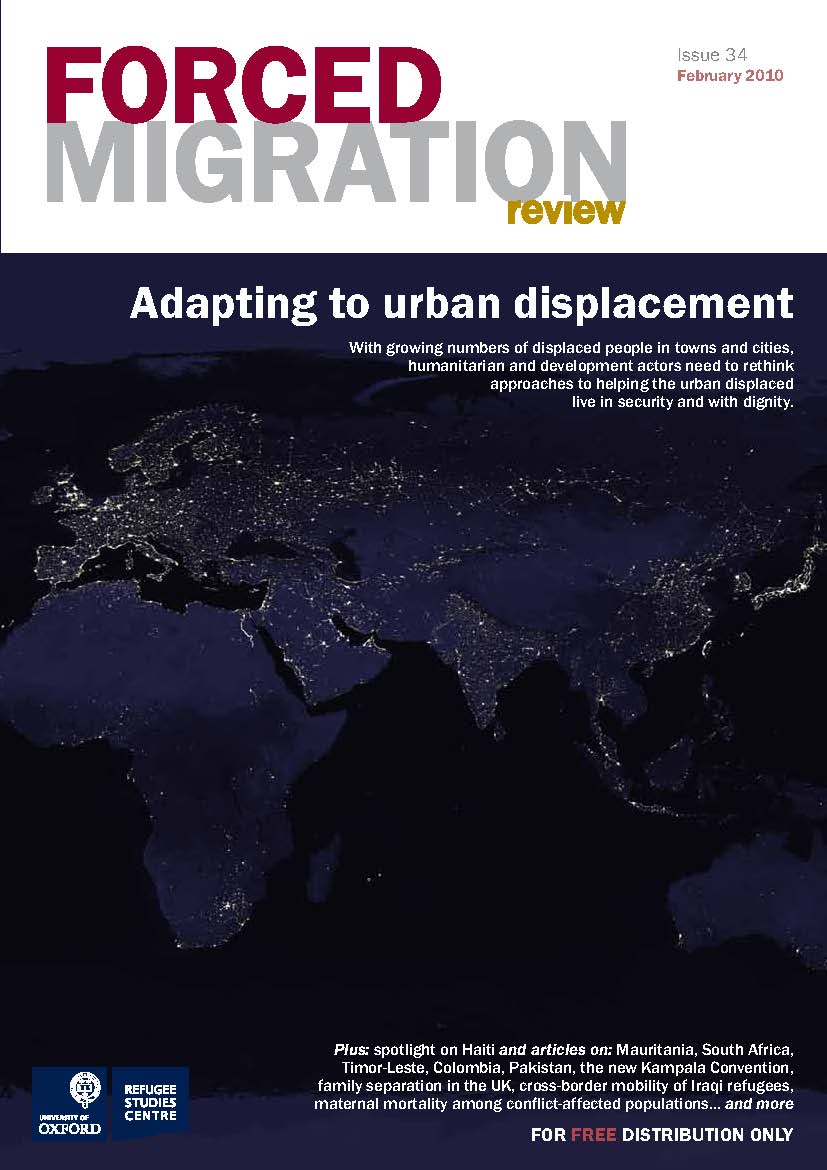FMR 34 is published in English, French, Arabic and Spanish.
Printed copies of FMR are free of charge. If you would like to receive a print copy for your organisation, or multiple copies for distribution to partners and policy/decision-makers or for use at conferences/workshops, please contact the Editors at fmr@qeh.ox.ac.uk. We will need your full postal address and details about how many copies (in which language/s) you require.
While we want to share the contents of this issue as widely as possible, we ask you to think carefully about how many print copies you need; please remember that it is available online, that print copies can be shared, and that printing and postage use up more resources than purely money.
We would like to thank the following donors for providing funding specifically for this issue: the Commonwealth Foundation, the Norwegian Refugee Council’s Internal Displacement Monitoring Centre, the Spanish Ministry of Science and Innovation, UN-HABITAT, UNHCR’s Policy Development and Evaluation Service, UNHCR’s Regional Bureau for Africa, and the US Department of State Bureau of Population, Refugees, and Migration (PRM).
More about the cover image…
This image of Earth’s city lights was created with data from NASA’s Defense Meteorological Satellite Program (DMSP) Operational Linescan System (OLS). Originally designed to view clouds by moonlight, the OLS is also used to map the locations of permanent lights on the Earth’s surface.
The brightest areas of the Earth are the most urbanised but not necessarily the most populated. (Compare western Europe with China and India.) Some urban areas – such as in Africa – might be experiencing population growth but not necessarily infrastructure growth (e.g. electricity service) and so will not show up as much as other similarly sized cities.
Cities tend to grow along coastlines and transportation networks. Even without the underlying map, the outlines of many continents would still be visible. The US interstate highway system appears as a lattice connecting the brighter dots of city centres. In Russia, the Trans-Siberian railroad is a thin line stretching from Moscow through the centre of Asia to Vladivostok. The Nile River, from the Aswan Dam to the Mediterranean Sea, is another bright thread through an otherwise dark region.
Even more than 100 years after the invention of the electric light, some regions remain thinly populated and unlit. Antarctica is entirely dark. Deserts in Africa, Arabia, Australia, Mongolia and the US are poorly lit as well (except along the coast), along with the boreal forests of Canada and Russia, and the Himalaya mountain range in Asia.
The Earth Observatory article Bright Lights, Big City describes how NASA scientists use city light data to map urbanisation.
